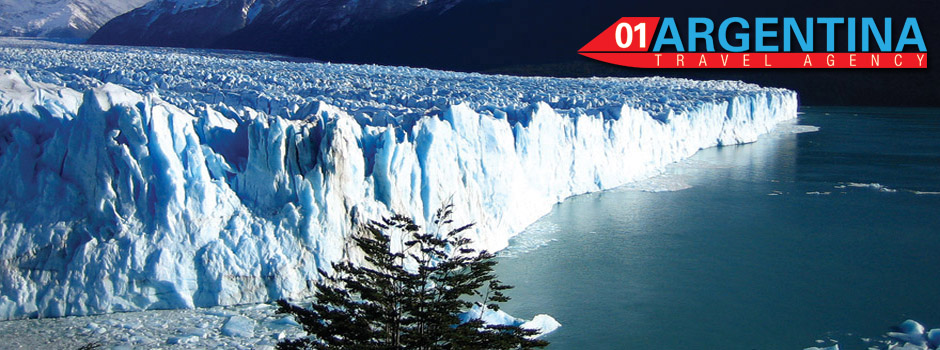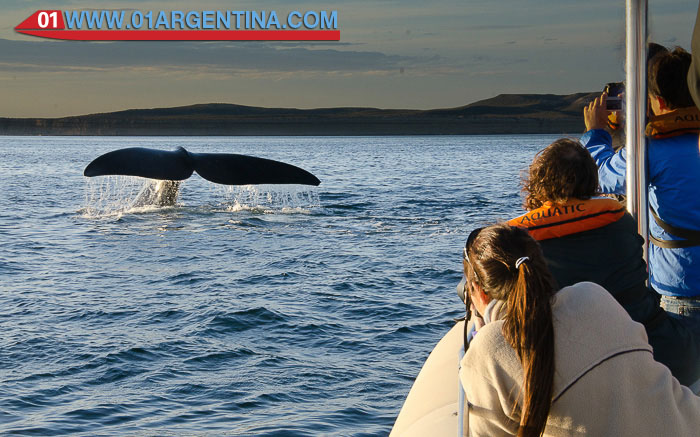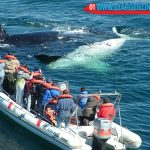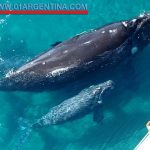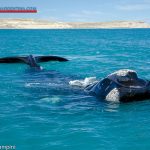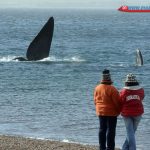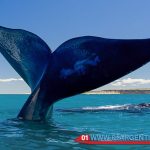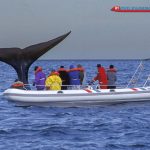Whale Watching in Puerto Pirámides and Puerto Madryn – Peninsula Valdés
Adventure Tourism in Patagonia Argentina
One of the best places in the world for whale watching is, without a doubt, Valdés Peninsula, and the only port in the area for whale watching is Puerto Pirámides. The boats, that leave of any of the 2 descents that the town has to the sea, are prepared for all the maneuver. All the personnel on board, are able to assist you. Suddenly the whales are on the coasts of Puerto Madryn, captains, experienced sailors enjoy along with tourists the wonderful experienceBe careful to obey the indications, they perceive much more than you think. You will not be alone and the respect for the rest of the people is fundamental to ensure an unforgettable nautical walk.
Whales have known the benefits of topography for millions of years. They are local in this area. They chose this natural repair to protect themselves from the storms of the ocean, in the raw season of the year. A microclimate and the conditions generated by 2 huge gulfs filled with bays give them, in the breeding and breeding season the ideal place to live. From the autumn until the end of spring, the whales come to Peninsula Valdés, from their feeding area.
They eat in the feeding zone, eat between 3 and 4 months in a row and stop feeding when they begin to move to this area of breeding and rearing. When arriving these marine giants are giants. This feature is perceived with the naked eye. The surface of the whale is left out of the water, which is just a small percentage of your body. They look a lot wider than when they leave at the end of the season, in the pregnant whales is much more obvious, because they have in their belly the offspring that is about to be born and weighs about 5,500 kg. It looks like it’s going to explode as fat as it is. And then the weight loss is greater than that of the males, because of the 100 liters of milk that expels for the ballenato.
In spite of the vast and immense space in which they are distributed in the New Gulf and the Gulf San Jose, to speak of the whales, is to speak of our tourist village. Puerto Pirámides is a point of approach of the man to the sea, it is an oasis in the desert. A hidden corner of Patagonia Argentina is the ideal base to project the encounter with the marine and terrestrial fauna of the region. But also, when talking about whales in Peninsula Valdés, you can not miss El Doradillo, a peculiar beach in Puerto Madryn, the region’s motherhood par excellence.
Where to see whales in Puerto Madryn?
Whales, chose this coast near Puerto Madryn, as the busiest nursery. Dozens of mothers march along this coast, to be with their young, the first months of life. There are also other animal species, that choose some specific place of Península Valdés to live some particular process of its annual cycle. The whales that arrive are of the southern Frankish species. The cycle begins when they appear on these coasts between the end of April and the beginning of May. Since the first is generally seen near the beach at some point on the south coast, near Puerto Madryn, day by day the number of whales grow and begin to be seen in small groups. They have a circulation pattern, predictable throughout the season. They begin to enter in the south and after passing the 8 months of permanence, the greater concentration is going to be found in the North zone of the Gulf, in the zone of Puerto Pyramids.
At the beginning of the season, between June and mid-October, Playa El Doradillo becomes the best place to see them from the coast a few meters away. So you can appreciate the incredible proportions of its size. Many times, the approach allows to be within 30 meters of the line where dozens of them float. The main characteristics that congregate the mothers with youngsters this portion of coast of Peninsula Valdes, being a beach of boulder that to few meters of the coast reaches more than 8 meters of depth, and having repair of the strong winds creates a Space of very calm waters. This singularity allows him to have enough depth to nurse his brood, while it prevents the males try to copulate for the lack of underwater volumetry to be able to move. These obscene behaviors require a minimum of 15 or 20 meters deep.
In 2012 a friend and colleague, Luis Pettite, recorded the first birth of whales in history, a news that went around the world, for being the first time that document is achieved all over the planet.
The whales have the capacity to float in a space of only 6 meters deep and the calf to breastfeed, is submerged holding the breath, to one of the 2 breasts, located one on each side of the genital cleft, to breastfeed. The mother Slightly lifts the caudal peduncle, while the little one is submerged and approaches obliquely to the belly. The whale receives milk from the mother, by means of the expulsion that she does and not by means of the suction that the whale exercises, as it would be in our case. The permanent oscillation in the sea causes the baby to swallow that high-fat milk, along with sea water. The whale needs great food, because in the first weeks grows at the rate of 3.5 cm daily. Being also mammals, although marine and having a shape and a size very different from ours, we have much affinity with them and be Near the whales in freedom is an unforgettable experience.
